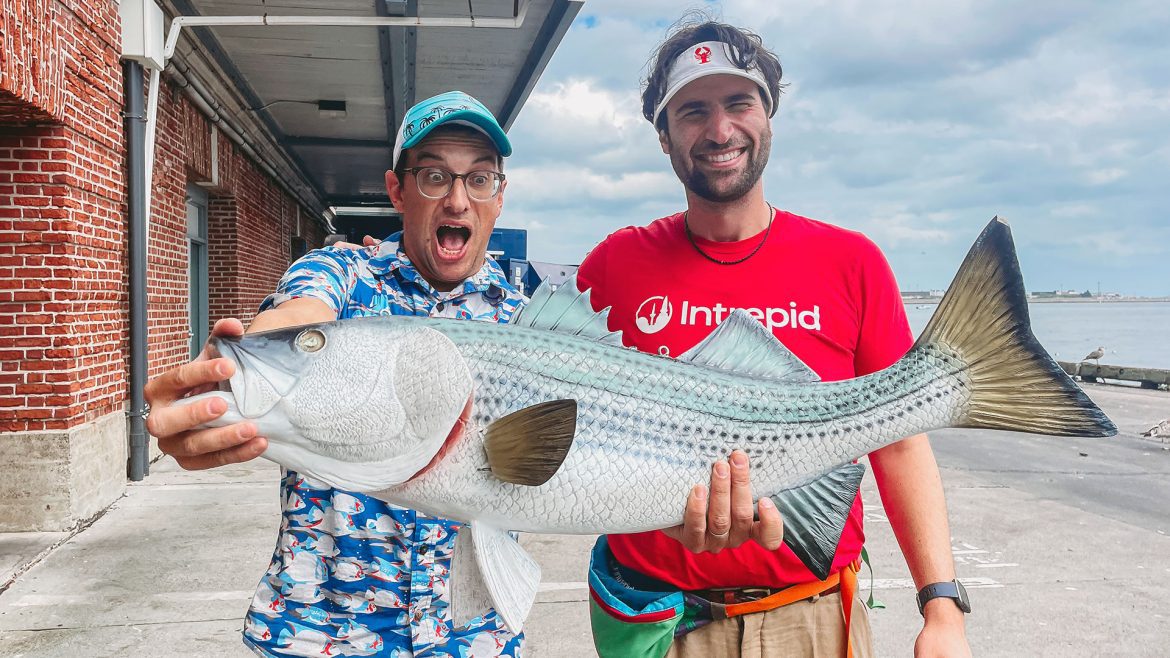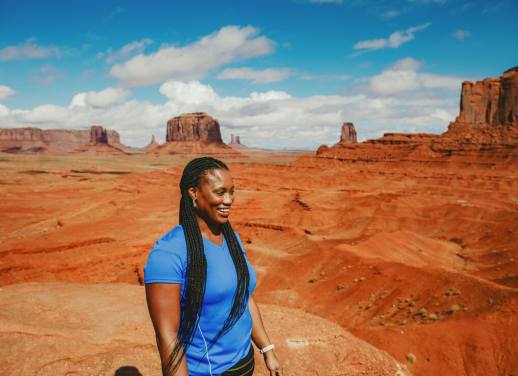On a walking tour of Boston’s fish pier and seafood shacks, a born-and-raised Bostonian gets a nostalgic taste of home and a reminder of the hard work and hearty meals that built this city and fuel it to this day.
Ask any local (including my dad) what Boston’s Seaport looked like 25 years ago, and you’ll hear some variation of the same answer: parking lots. Nothing but parking lots. But today, those parking lots have given way to a thriving food scene, where I’m about to chow down on chowder and lobster rolls on a behind-the-scenes seafood tour.
Mid-morning sunlight bounces off the harbour. The air is filled with a briny, salty funk and the sounds of forklifts whizzing past. I’ve joined Urban Adventures’ Boston Seafood Experience tour of the Seaport, a neighborhood I know well as a Bostonian. But before I can fully focus on the culinary crawl ahead, I’m desperately trying to reconcile the old-school working waterfront with the glitzy glass towers that have sprung up seemingly overnight. Centuries-old brick warehouses are shadowed by high-rises, and small, family-run seafood businesses sit alongside high-end retail shops. This is not the Seaport I remember.
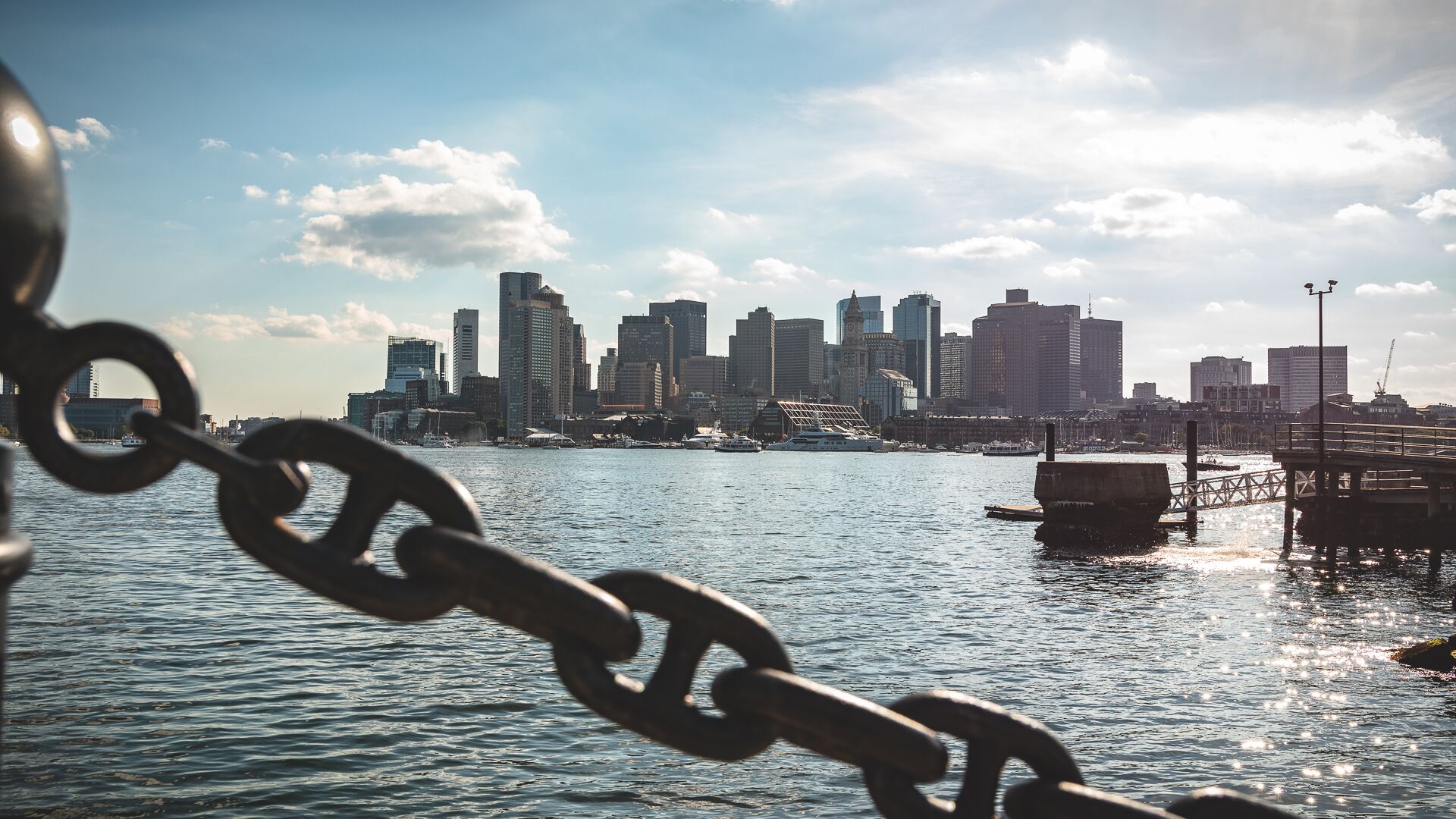
A century at the Fish Pier
Developed as an industrial port in the 1850s, the Seaport spent more than a century as a muddy sprawl of parking lots and weathered wharves. In the 1970s, it expanded to a few seafood restaurants, dive bars and organised crime haunts, but the Boston Fish Pier, which opened in 1914, was a constant.
It’s is the oldest continuously operating fish pier in the United States, and it still functions much as it did a hundred years ago. Inside brick warehouses and cold storage rooms, wholesalers pack and ship New England staples like cod, haddock, scallops and clams. Every day before sunrise, on-site auctions move thousands of pounds of fish destined for restaurants all over the United States, from Boston to the Midwest.
I’m standing outside Red’s Best, a family-owned fishing business that’s one of over 20 small operations tucked along the pier. My tour guide, Nabil, projects over the rumble of refrigerated trucks. ‘The tourists never come here!’ he shouts. He gestures to the bustle of fishmongers, clad in rubber boots and coveralls, hauling crates of this morning’s catch from the backs of trucks and packing glistening whole fish on mounds of crushed ice, to prove his point. ‘This is where Boston’s flavour really starts.’
And he’s not wrong; over the course of a few hours, we’ll be tucking into four local New England dishes. We’re at Red’s for fresh-off-the-boat, wild-caught Atlantic bluefin tuna handrolls made exclusively for us by Red’s in-house sushi maker.

Red’s, whose motto is ‘fishermen first,’ is working to support ethical, sustainable fishing practices and has been a fixture of the area since 2008. Their working warehouse facility supplies local markets and restaurants with a variety of fish and shellfish, while an onsite production kitchen crafts fresh sushi, typically only available through their catering business. For us, though, the team has set up a rare, behind-the-scenes tasting. After watching Red’s crew trim fillets on the production floor, I’m handed a sea-scented nori wrap stuffed with deep red tuna, avocado and cucumber in a true ocean-to-table scenario. Red’s crew unloaded the bluefin from fishing boats this morning and prepped it steps from where I’m standing. And because most fish in sushi kitchens tends to be imported, this may be the freshest handroll I’ve ever had.
Apart from a weekly farm and fish market, the Boston Fish Pier, now owned by the Massachusetts Port Authority, isn’t open freely to the public, so this exclusive, behind-the-scenes opportunity to interact with the producers is really special. ‘I just love the concept,’ Nabil says. ‘Not many people get to see this incredible resource’.
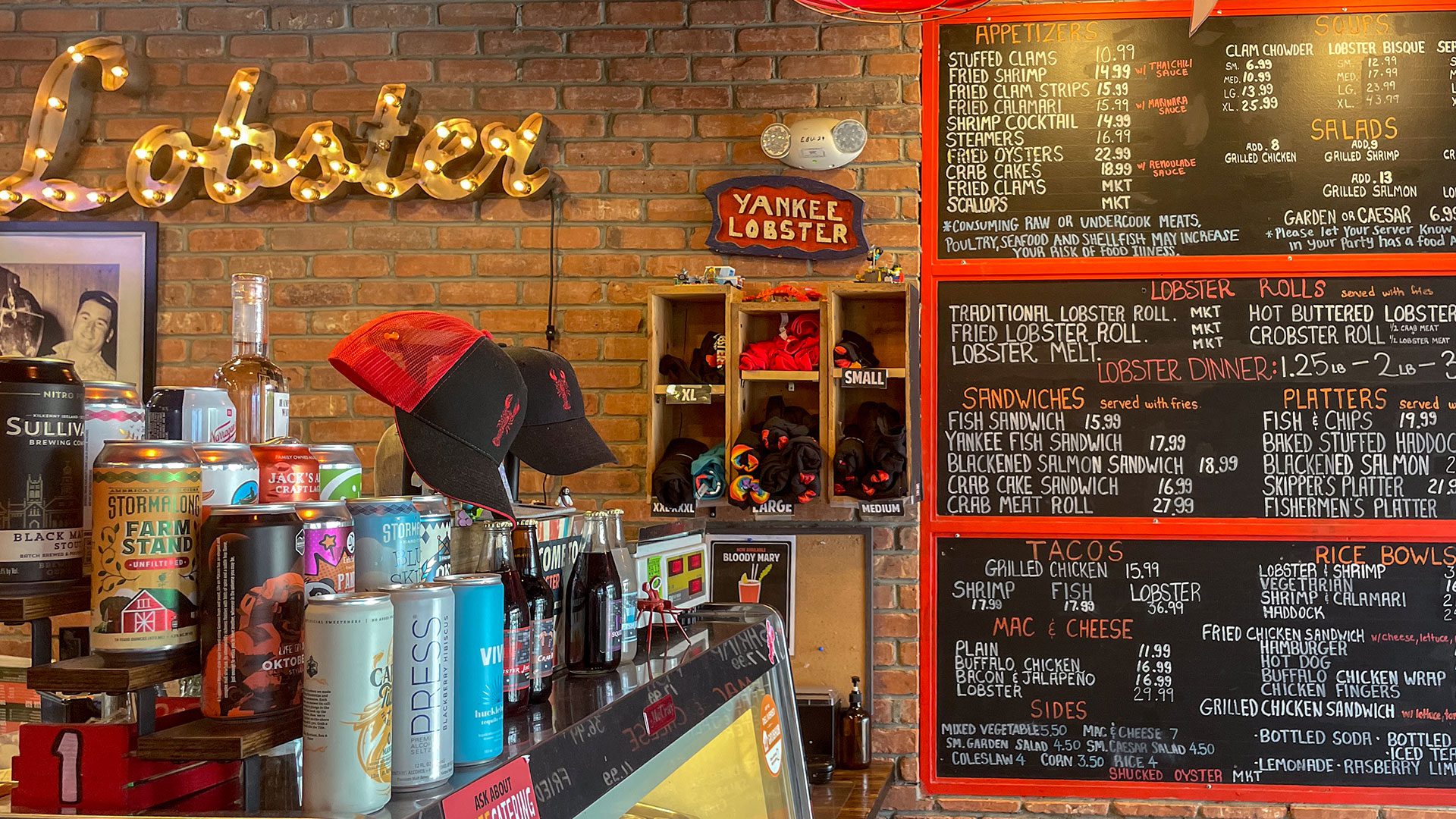
Boston keeps it classic
While the Seaport of today has risen from mud lots to a skyline of glass condos, consulting firms and rooftop cocktail bars, Boston’s food scene hasn’t followed the same script. Unlike Los Angeles or Chicago, where culinary innovation is practically a sport, travellers still come here for the city’s steadfast classics. Forget molecular gastronomy, people crave the working-man’s fare that built Boston’s reputation: hearty bowls of chowder, lobster rolls served on humble hot dog buns and the kind of seafood that has been fuelling the city for centuries. Beneath the Seaport’s polished facade, the flavours remain defiantly familiar.
‘If Samuel Adams were to take our seafood tour,’ Nabil says, ‘he’d be shocked by the electricity, the cars, maybe even his face on every beer bottle. But once I bring out the clams, lobsters and oysters, he’d feel right at home as if it’s 1776.’
And honestly, everyone in my group feels at home, too. Since we’re all originally from Boston, it doesn’t take long for a spirited chowder debate to break out. Nabil swears he has a five-way tie for best chowder restaurant, then leans in with instructions as we eye our four steaming cups. ‘Rest your spoon on top,’ he instructs. ‘If it sinks, we’re sending it back.’ It’s his own playful spin on the adage that good chowder should be thick enough to hold a spoon upright.
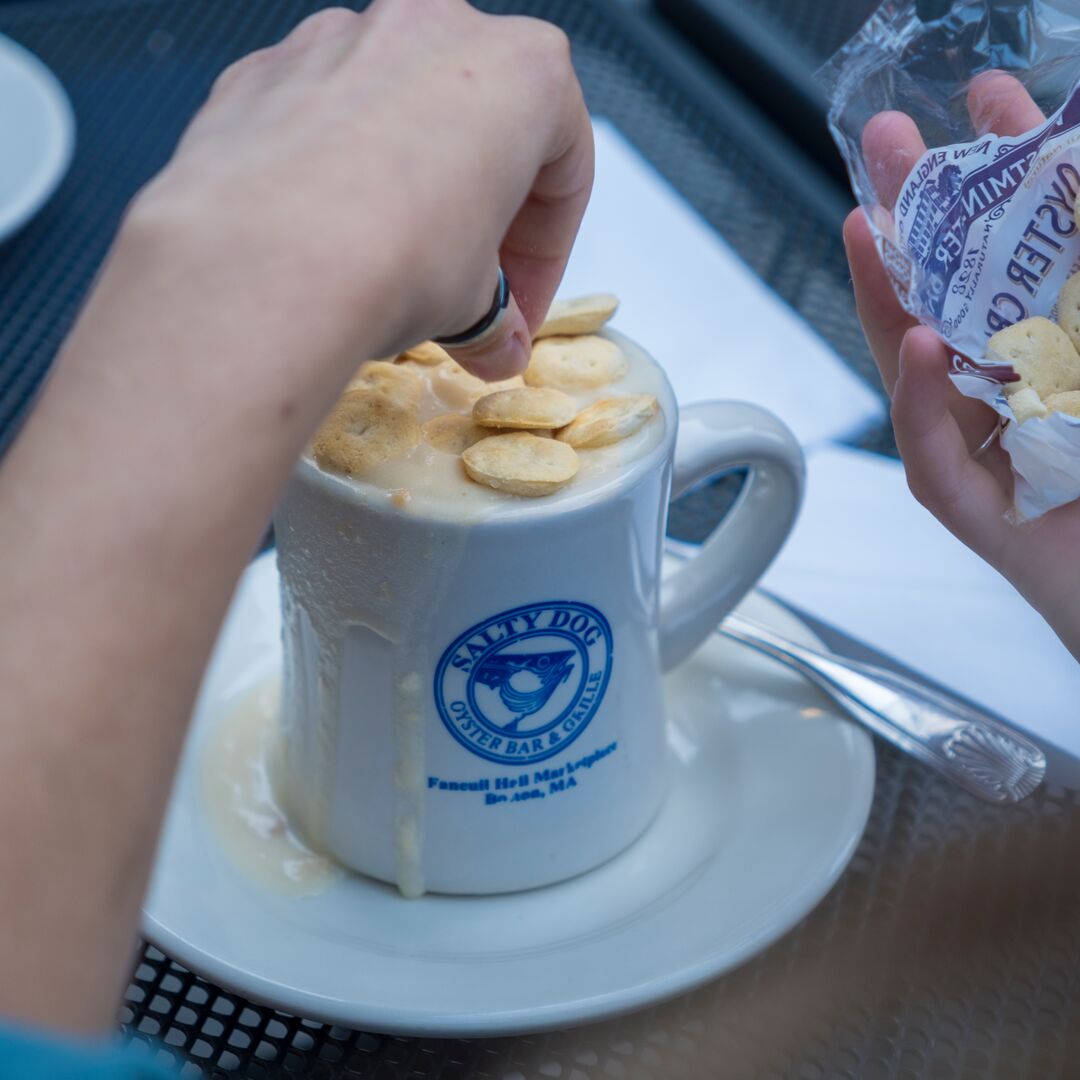

Chowder loyalties run deep in New England, and everyone has an opinion on who makes it best. The classic version is creamy and rich, made with clams and potatoes, but most arguments center on the details: should it be thick and hearty or briny and brothy? Is bacon an essential ingredient or an unnecessary addition? Even the number of potatoes can be grounds for debate. But if you mention Manhattan clam chowder, the tomato-based version from New York, you’ll mostly be met with silence. Around here, everyone agrees that one’s not even part of the conversation.
When we arrive at the iconic James Hook Lobster Co., a member of our group laughs, recalling how she used to pick up live lobsters here every Mother’s Day and Christmas. Her son, polishing off the last bite of his overstuffed bun, declares it might be the best lobster roll he’s ever had. And it’s hard to argue; by all measures, James Hook’s no-gimmick roll is a contender for the city’s best. ‘While many of our guests are from out of town,’ Nabil says, ‘it’s especially rewarding to see locals’ reactions when we bring them to authentic places like this.’


History tastes pretty good
Each stop on our tour felt like a bite-sized lesson in Boston’s culinary heritage, every lobster and clam like a piece of harbour history. As we wander toward Fort Point, the city’s maritime DNA reveals itself even more. Nabil points out the nautical flourishes hidden in plain sight: a building shaped like a fin, an anchor motif on a sleek office entryway, a wave etched in the sidewalk. We pass Our Lady of Good Voyage, a small church that once offered a late-night Mass just so longshoremen and dockworkers could find a pew after their shifts, now situated across from a gleaming WeWork co-working space.
‘Boston is a city of contradiction,’ Nabil explains. ‘Old-fashioned yet high tech, book smart but street smart. You’ll get sunburned in the summer and frostbitten in the winter.’
It’s easy to see why Boston’s cuisine never chased the trends. This is a city shaped by the labour of fishermen and dockhands, raised on meals meant to fill bellies after hours of hard work. The Seaport’s skyline may be unrecognisable, but the taste of Boston hasn’t changed a bit.
The Boston Seafood Experience is a 2.5-hour Intrepid Urban Adventures walking tour in Boston’s Seaport district. The guided tour includes a variety of food samples, exclusive behind-the-scenes access to the Boston Fish Pier and insight into the Seaport’s sustainable seafood practices.

